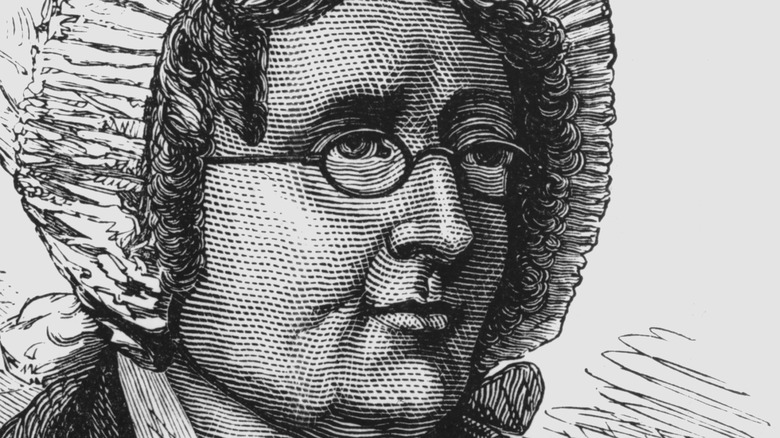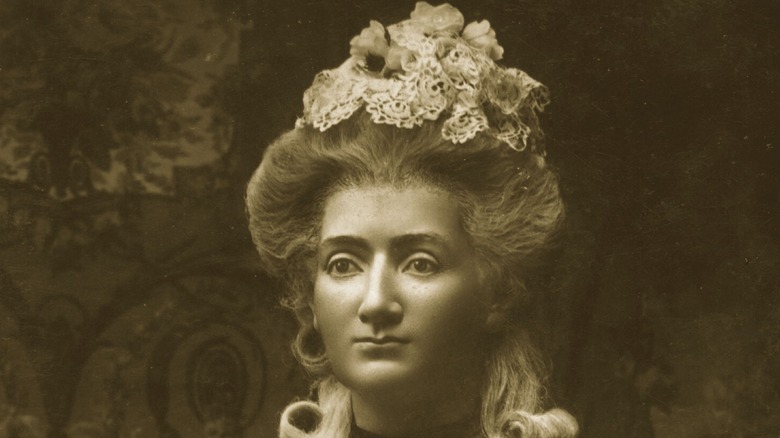How Madame Tussaud Narrowly Escaped The Guillotine
Madame Tussauds locations are some of the most recognisable and popular tourist attractions around the world. The wax museums offer incredible likenesses of a huge range of stars, celebrities, and historical figures, ensuring that every visitor will find somebody with whom to share a classic Madame Tussauds cheesy selfie. In all the glitz and glamour of the premium ticket prices and crowded big-city experience, though, it's easy to lose sight of the grim reality of who Madame Tussaud really was, and the awful fate she almost met.
As Britannica reports, Marie Tussaud was born Marie Grosholtz in Strasbourg in December 1761. She learned to model wax in Paris, from a true master of the art: Philippe Curtius. The skills she developed served her well. She rose to teach art to Madame Élisabeth, King Louis XVI's sister, on top of taking ownership of Curtius' wax museums when he died. Her close connections with the royal family and lavish palace of Versailles, however, meant that her life was in terrible danger once the French Revolution began.
The terrors of the Reign of Terror
Per History, the revolution started in 1789, erupting as a response to weak harvests, financial mismanagement by the monarchy, and workers simply wanting and demanding a better lot for themselves. January 1793 saw the king himself executed for high treason, and his queen, Marie Antoinette, followed later in the year. The bloodiest period of the revolution, the Reign of Terror, was still to come.
History goes on to state that more than 17,000 people were tried and executed for suspected opposition to the revolution during the Reign of Terror, which lasted almost a year. This was headed up by the Committee of Public Safety and the dreaded Robespierre (who would meet the guillotine himself in July of 1794). According to Britannica, somebody had to create death masks of the many people executed, and who got the job? None other than wax-whiz Marie Tussaud.
The fact that Tussaud would surely have known some of the executed people personally added a special kind of horror to proceedings, but she was incredibly fortunate not to have lost her own head along the way. She would have, if the venerable Curtius hadn't spoken up to the revolutionaries on her behalf.
Only Curtius' intervention saved Tussaud from losing her head
As The Vintage News reports, the revolutionaries knew of Tussaud's ties to the royal family, and they certainly weren't partial to even wax models of the royals. July 14, 1789 saw the storming of the Bastille, but before that, on July 12, a Parisian protest saw several of Curtius' wax models of high-profile people decapitated and marched through the capital.
It was only a short leap from realistic human necks to real human necks, and Tussaud herself was captured and incarcerated along with many others who were believed to have favorable views of the monarchy.
The Vintage News states that Tussaud was just days from her execution when Curtius declared to the revolutionaries that she wasn't an out-of-touch aristocrat, but that she supported the cause of a better life for hard-working people. By so doing, he secured her freedom, getting her the job of creating the masks of the condemned peoples' faces into the bargain. And so Tussaud and her work went on to be remembered around the world, starting from the most harrowing of circumstances.


